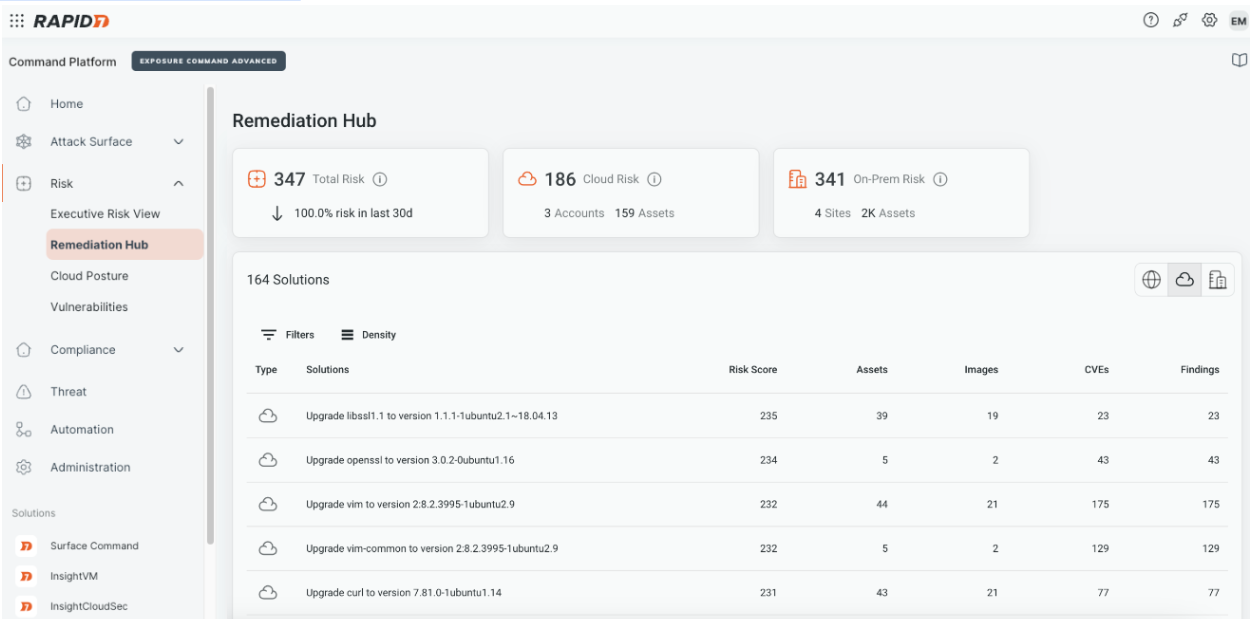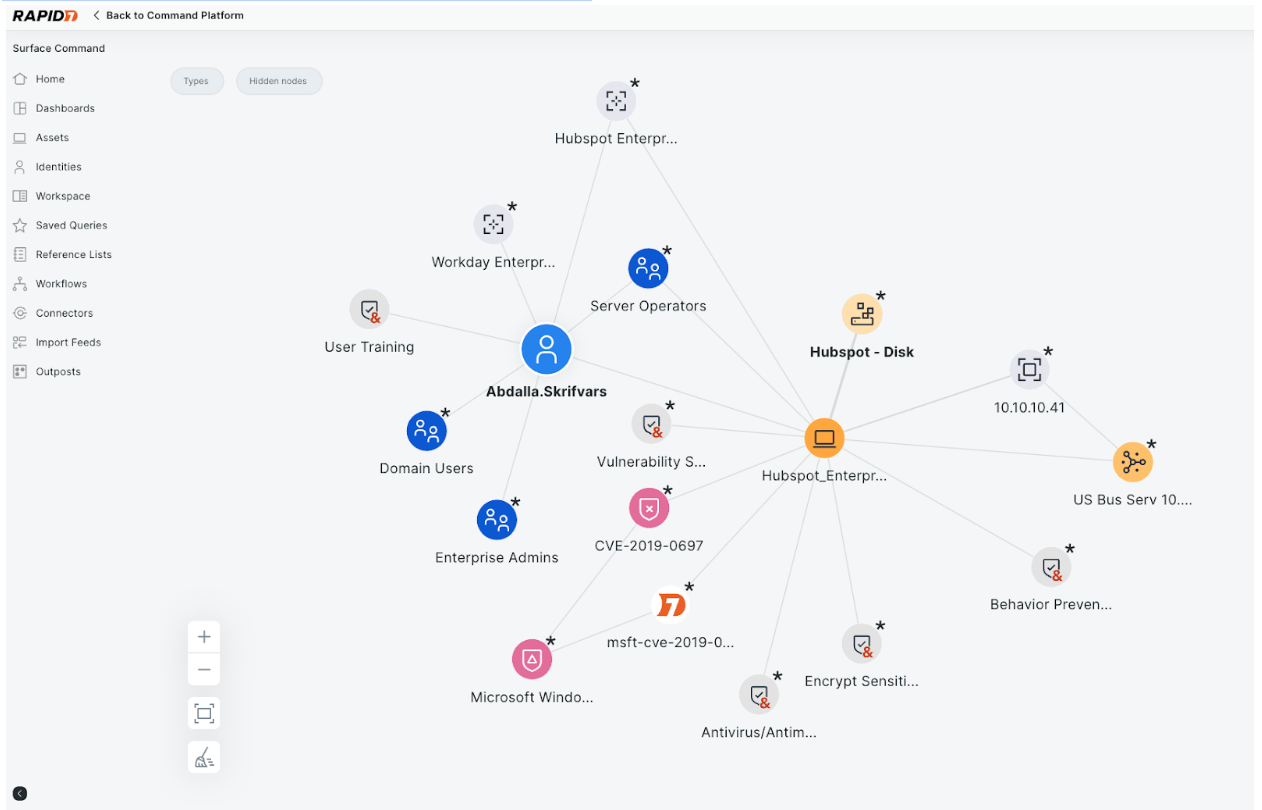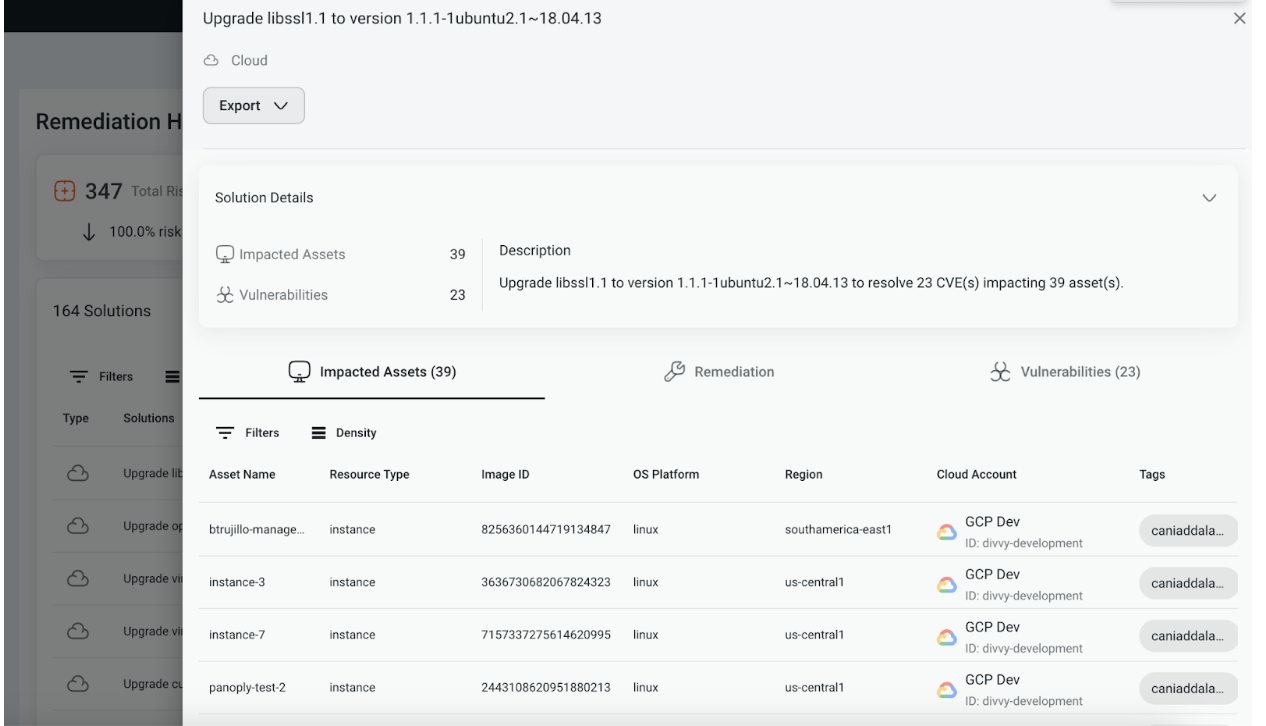Last updated at Mon, 30 Dec 2024 15:36:42 GMT
As organizations continue to scale their digital infrastructure, the volume of vulnerabilities and exposures grows at an overwhelming pace. Security teams often find themselves inundated with alerts and risk signals, unable to remediate every issue within their environment. They often struggle to keep pace with the dynamic nature of threats, and existing tools were not built to address the complexity of modern IT environments.
With limited time and resources, trying to address every potential vulnerability is not feasible. This reality has driven the need for prioritization—teams must focus on the vulnerabilities that present the highest risks to their organization, based on factors like attacker behaviors, real-world threat intelligence, and exploitability.
Meet Remediation Hub, Your New Home for Exposure Prioritization and Remediation

Rapid7’s Remediation Hub, our newest addition to the Exposure Command platform, is designed to address this exact challenge. Remediation Hub automatically prioritizes various risk signals across your hybrid environment and suggests the actions your team can take that would have the largest impact on reducing your overall risk posture.
The solution leverages foundational visibility from Surface Command, which presents a comprehensive view of your attack surface, combining both external scanning and cyber asset management to provide a dynamic inventory and topology map of every asset across your environment. Underpinned by a powerful graph database, the platform allows teams to visualize the entire attack surface and understand the interconnected relationships between assets, ensuring that teams are guided to take action on the risks that are not only likely to be exploited but could also have the broadest blast radius.

Remediation Hub considers factors like public accessibility, reachability, and the presence of downstream controls (like a firewall, for instance) when prioritizing vulnerabilities. The platform’s Active Risk incorporates real-world threat intelligence from Rapid7 Labs and our open source community to provide clarity into what CVEs are being actively exploited in the wild, which could provide insight into which exposures across your environment attackers are likely to target.
Along with insight into the impacted assets, teams are also provided step-by-step guidance on how to implement the suggested fix, with many actions available as native automation workflows.

Proactive Exposure Management: Moving from Reactive to Proactive
By taking a more targeted, intelligence-driven approach to remediation, security teams can move from reactive to proactive exposure management, ultimately making their organizations more resilient to attacks and accelerating the time it takes to both detect and remediate exposures that pop up across their environments.
To learn more and experience a self-guided Product Tour, click here.
What’s coming next?
In the next post, we’ll walk you through how users can leverage Remediation Hub when responding to an Emergent Threat, including gathering available information about a zero-day, building an understanding of your exposure, along with step-by-step remediation guidance.
We’ll also, of course, continue to bring additional enhancements to Remediation Hub geared toward making it easier for teams to more effectively collaborate with stakeholders across the organization to prioritize and remediate exposures across their hybrid environments. So be sure to stay tuned here for more posts with those updates. As always, we welcome customer feedback and would love to hear from you! Your input helps us tailor our product roadmap, based on your priorities and business needs.

